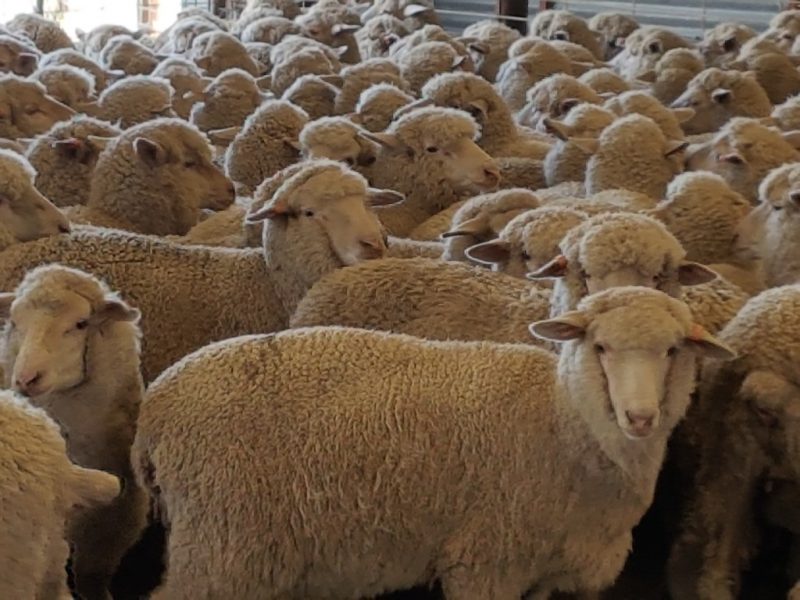No Question about Quality
Original article written by Xanthe Gregory. Original photos courtesy of Russell Coad.
RUSSELL COAD
SHELFORD, VICTORIA
“The lambs aren’t just growing well, they’re surviving at incredibly high rates.”
FOR SHEEP farmers, quality wool is a trait that can’t be sacrificed and the Dohne’s superior white wool makes them a breed that ticks all the boxes. This is the case for Dohne breeder Russell Coad who’s lived on his family’s Barunah Plains property in Victoria his entire life.
In the 1970’s the Merino stud, between Shelford and Cressy, began to change up their breeding lines. Today they run a predominately Dohne flock. “We saw an opportunity where the Dohne fitted
into our operation,” Russell said.
On 2,000 hectares, ‘Lambruk’ is a mixed farming operation. Around 20% of the farm is used for cropping wheat, barley, canola, oats and a mix of summer crops. The rest is left for their four to five thousand ewes, depending on the season.

Russell Coad on his “Lambruk”property
Twelve years ago, Russell stopped mulesing his Merino flock, into which he gradually introduced the Dohne rams.
“Mulesing was part of the reason we put the Dohne through our flock which certainly plained them up a bit.”
His most recent off-load of cast for age ewes dressed out at between 21 to 22 kilograms. This is particularly impressive for a year which had well-below average rainfall and he says is very good for a sheep on their Southern Victorian country. “We had a fairly tight season so because they’re a bit more hardy, they can do a bit better on tougher conditions and sustain their body weight very well.”
Even in the harsh conditions of last year, their wool still tested extremely well, and puts up some competition for the fine Merino wool. “The Dohne’s tensile strength seems to perform better than the Merino wool and it sells pretty well.”
Russell’s Dohne wool clip averages at around 18.5 microns, which continually surprises him that the fine wool quality is sustained during drought conditions. Through the selective breeding criteria of the Dohne, he has maintained his fine wool with the dual purpose sheep.
“The micron range in our flock hasn’t really changed from what it was with the Merino sheep. The Dohne maintain a reasonable level, not too strong, not too fine.”
4.5 to 5 kilograms is the average wool cut of the Dohne, even when rains are few and far between and feed is minimal. “We were pretty right on the mark considering how hard the season was.”
It’s not just fine wool that has won Russell over, it’s the ability to also turn lambs off earlier at six to seven months. He recently sold some seven month old lambs at just over $100 a head, an impressive price for such young lambs considering the season and their environment. “The lambs are bigger at lamb marking, it’s quite astounding really,“ he continued.
The lambs aren’t just growing well, they’re surviving at incredibly high rates. Russell has improved his lambing percentages considerably and his weaning rates are up by nearly 10 per cent. “The survival rate of the Dohne lambs has been considerably higher than the traditional Merino.”
Russell will continue to breed the Dohne as they’re giving him the results even when he least expected them.

August 2018 drop Dohne lambs.










 Facebook
Facebook YouTube
YouTube Instagram
Instagram